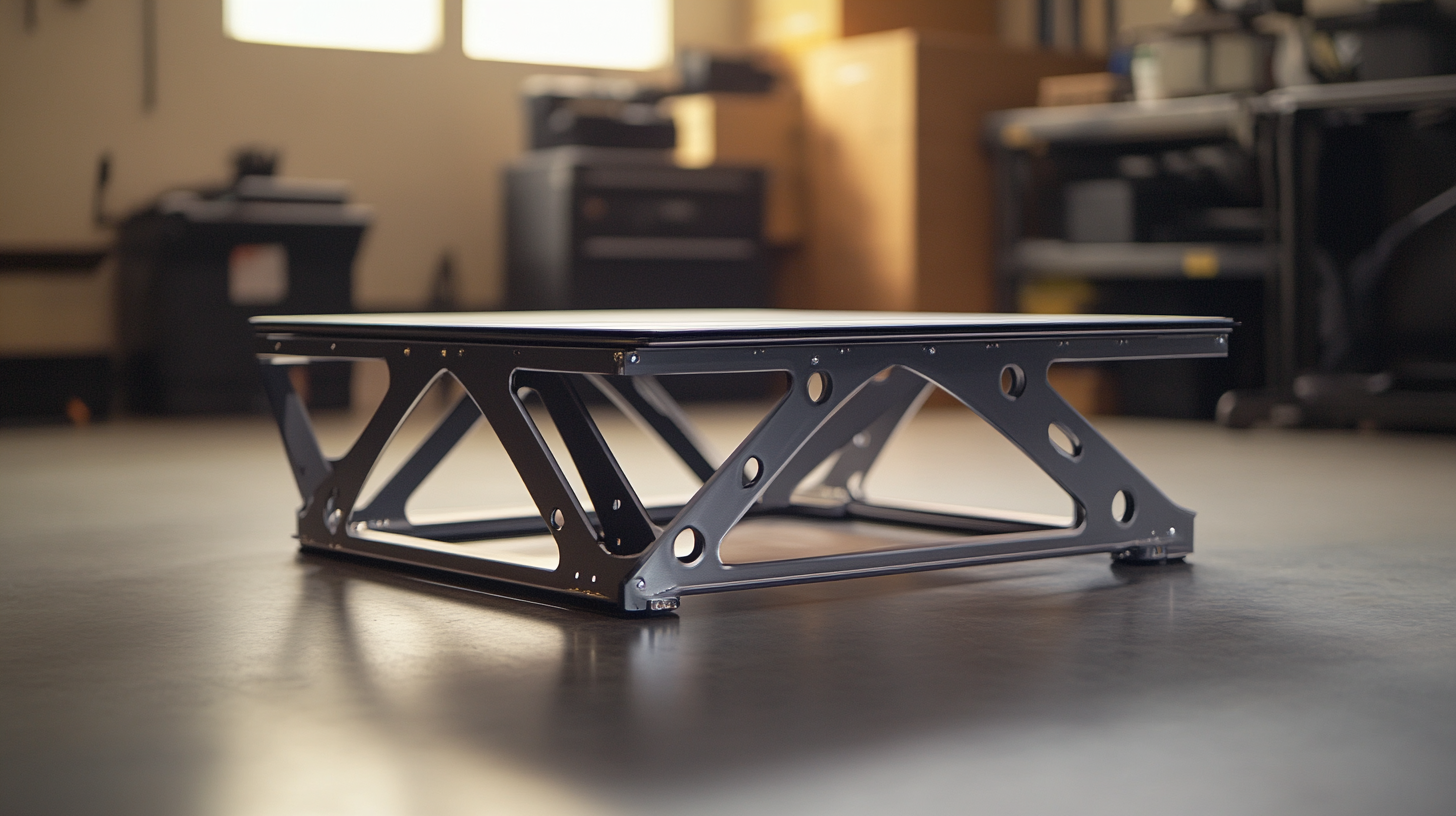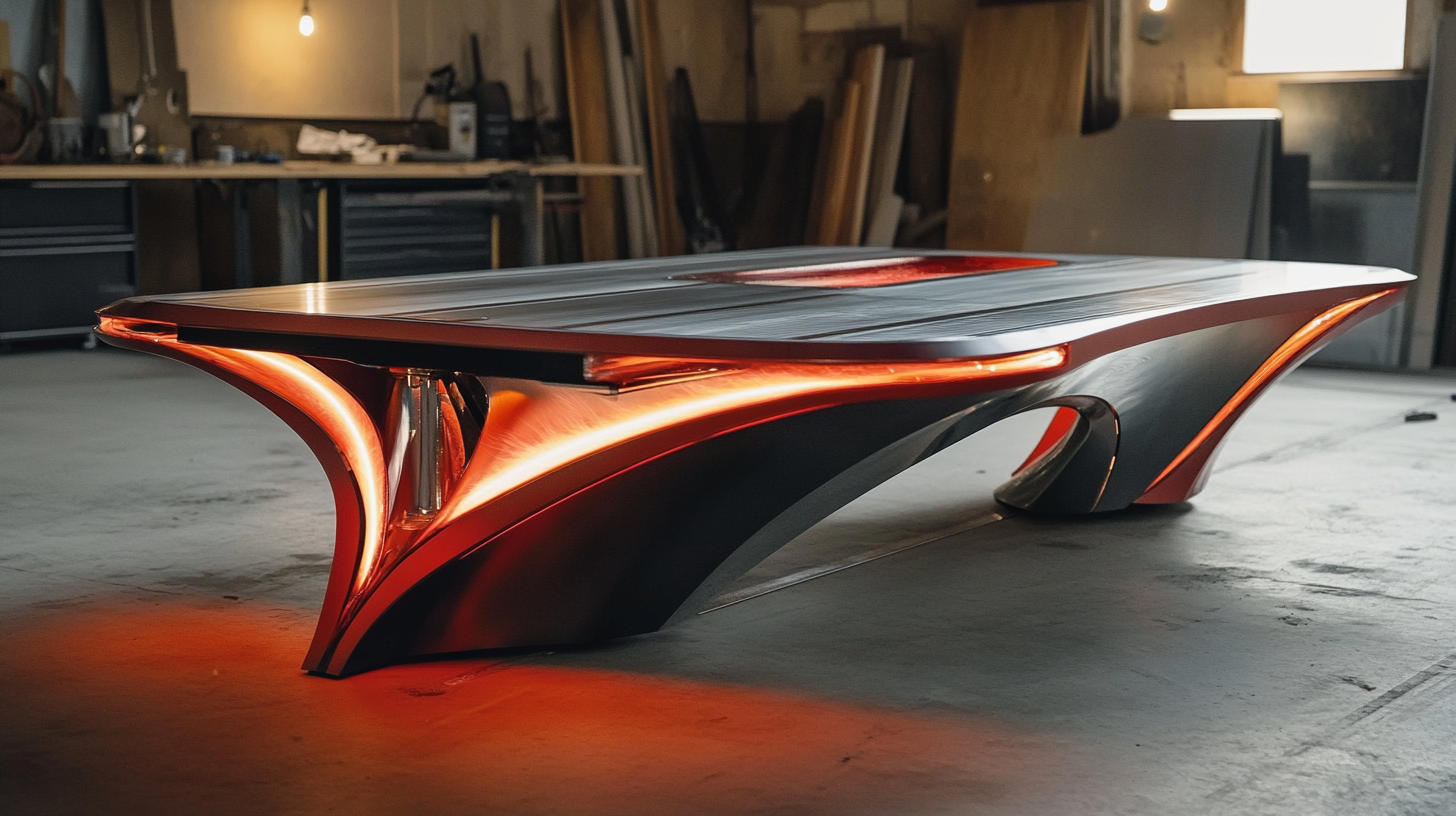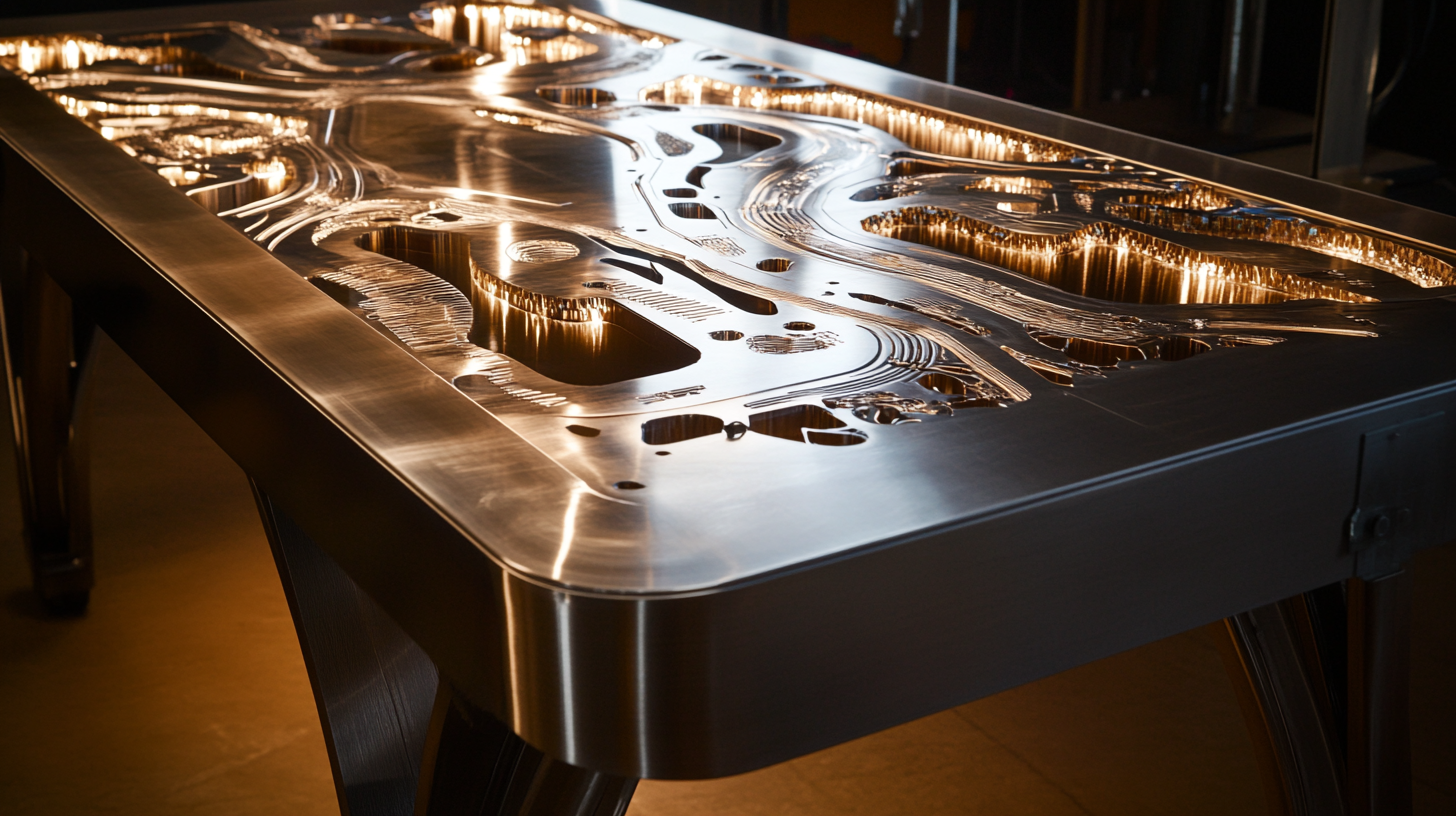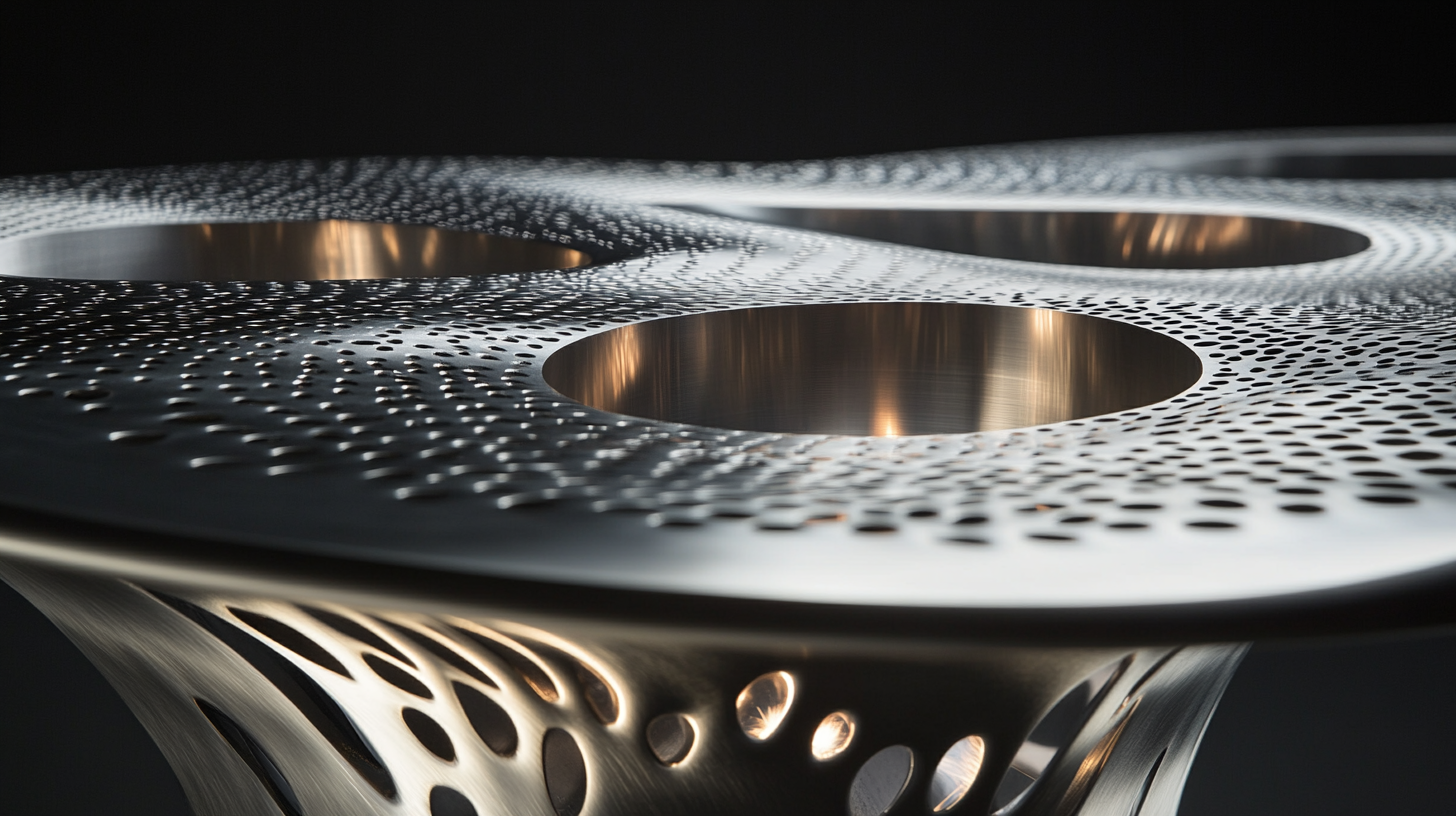© 2025 Messer Cutting Systems, Inc.
In the rapidly evolving landscape of metal fabrication, precision and efficiency are paramount to meeting the increasing demands of industries such as automotive, aerospace, and construction. According to a report from MarketsandMarkets, the global metal fabrication market is expected to reach $20 billion by 2024, driven by innovations in technology and process optimization. Among the advancements leading this charge are Plasma Cutting Tables, which have revolutionized the way metal components are cut and shaped, providing exceptional accuracy and speed compared to traditional methods.
Plasma Cutting Tables utilize high-velocity plasma to cut through metal with precision that minimizes material waste and enhances production efficiency. A study by Research and Markets highlights that the adoption of advanced cutting techniques, like plasma cutting, can improve operational efficiencies by up to 30%. As manufacturers strive to stay competitive in a market characterized by tight margins and high-quality expectations, investing in state-of-the-art Plasma Cutting Tables is becoming increasingly vital. These innovative tools not only enhance the quality of finished products but also contribute to a more streamlined and cost-effective fabrication process.

The evolution of plasma cutting technology has significantly transformed the landscape of metal fabrication, making processes more efficient and precise. Over the past few decades, advancements in plasma cutting have evolved from basic systems to highly sophisticated tables that integrate cutting-edge features such as advanced motion control and automation. These innovations have enabled fabricators to achieve cleaner cuts, reduced material waste, and enhanced overall productivity, positioning plasma cutting as a favored choice in various manufacturing environments. As the global market for plasma cutting machines is projected to surge from $646.2 million in 2023 to $841.4 million by 2030, the focus on innovation continues to drive the industry forward. Companies are increasingly adopting smart technologies and CNC machining integrated with artificial intelligence to further refine precision manufacturing. This technological integration not only optimizes cutting speeds but also elevates the accuracy of cuts, allowing manufacturers to meet the growing demands of their customers while remaining competitive in a fast-evolving market. Moreover, the recognition of innovative manufacturers in regions like Northeast Ohio highlights the commitment to excellence in the field of metal fabrication. These forward-thinking organizations are embracing new technologies and methodologies, setting benchmarks for quality and efficiency in plasma cutting. As we look towards the future, the intersection of plasma cutting technology and smart manufacturing practices promises to unlock new potentials in the metalworking industry, paving the way for unprecedented growth and innovation.

Innovative plasma cutting tables are revolutionizing the metal fabrication industry by enhancing precision and efficiency. These advanced systems are equipped with features that significantly improve the cutting process. Key among these is the automation technology that allows for precise control of the cutting speed and movement. According to a report by MarketsandMarkets, the global plasma cutting market is expected to grow from USD 4.51 billion in 2020 to USD 5.84 billion by 2025, driven in part by these innovative technologies.
Another important feature of modern plasma cutting tables is their ability to integrate with CAD software. This integration streamlines the design-to-production workflow, reducing manual input errors and increasing productivity. A study by IBISWorld notes that companies utilizing advanced plasma cutting solutions have reported a 20% increase in production efficiency due to this direct compatibility. The use of high-definition plasma cutting technology allows for cleaner cuts and reduced material wastage, which is vital in today’s cost-sensitive environment.
Additionally, many innovative plasma cutting tables come equipped with real-time monitoring features, enabling operators to track the performance and condition of the machinery. This capability not only enhances operational transparency but also facilitates proactive maintenance, as highlighted in the Technology and Market Analysis report by Grand View Research. With the ability to predict potential issues before they escalate, manufacturers can minimize downtime and maintenance costs, underscoring the role of advanced plasma cutting tables in modern metal fabrication processes.

In the world of metal fabrication, precision is paramount. Traditional cutting methods often fall short in achieving the exact specifications required for complex designs. This is where plasma cutting tables come into play, revolutionizing the way fabricators approach their projects. These innovative tools allow for unparalleled accuracy, transforming raw materials into precisely cut components with intricate designs that previously seemed impossible.
Plasma cutting tables employ a high-velocity stream of ionized gas to cut through metals with exceptional detail. This process not only enhances the speed of production but also minimizes waste material, as the cutting path is narrow and adheres closely to the required dimensions. Fabricators can program intricate shapes and designs directly into the table’s software, reducing the human error that often occurs in manual cutting processes. The result is a higher quality product that meets stringent industry standards.
Moreover, the adaptability of plasma cutting technology makes it an ideal choice for various materials and thicknesses. Whether working with mild steel, stainless steel, or aluminum, fabricators benefit from the consistent performance of plasma cutting tables. These advancements ensure that even the most challenging projects can be completed with precision, paving the way for intricate designs and ensuring that every piece fits together seamlessly. By incorporating plasma cutting technology, businesses can significantly improve their workflow, leading to enhanced productivity and satisfaction in their final output.

In the world of metal fabrication, optimizing both cost efficiency and time savings is paramount. Innovative plasma cutting tables have emerged as a transformative solution, significantly enhancing the operational capabilities of fabrication shops. According to a study by the Fabricators & Manufacturers Association (FMA), companies that have integrated advanced plasma cutting technology report a reduction in operational costs by as much as 30%. This efficiency stems from the reduced material waste and the precise cutting capabilities of modern plasma systems, which allow for better use of raw materials.
Moreover, the speed of plasma cutting tables is a significant factor in driving productivity. Traditional cutting methods can be cumbersome, leading to extended turnaround times. However, plasma cutting machines can execute complex cuts in a fraction of the time. Research from the American Welding Society (AWS) has shown that shops equipped with plasma cutting technology can increase their cutting speed by up to 50% compared to traditional methods. This not only accelerates project timelines but also enables businesses to take on more jobs simultaneously, directly impacting their bottom line.
Furthermore, advancements in automation and software integration have streamlined the entire fabrication process. Plasma cutting tables now come equipped with integrated scheduling and management software, allowing for smoother operational workflows. A report by the National Association of Manufacturers (NAM) highlights that automation can decrease labor costs by 20% while increasing the overall output, demonstrating how plasma cutting technology can pave the way for more efficient and profitable fabrication processes. As the industry continues to evolve, embracing these innovations will be key to maintaining a competitive edge.
The plasma cutting industry is on the cusp of significant transformation, driven by innovative technologies and evolving market demands. As manufacturers seek to enhance precision and efficiency in metal fabrication, advancements in plasma cutting tables are leading the charge. Recent reports highlight that the global plasma cutting market is projected to grow substantially, with a compound annual growth rate (CAGR) of approximately 5.2% from 2023 to 2028. This growth reflects not only the rising demand for automation in industrial settings but also the shift toward incorporating smart technologies that enhance operational capabilities.
Future trends in plasma cutting will undoubtedly focus on integrating artificial intelligence and machine learning to optimize cutting processes. Intelligent systems can both analyze and adjust parameters in real-time, ensuring maximum efficiency and minimizing waste. Additionally, the introduction of advanced plasma sources is set to revolutionize cutting capabilities, allowing for thinner metals to be processed with unparalleled accuracy. Reports indicate that innovations in power supply technology are enabling higher melting capacities and faster operation speeds, which is critical in a competitive manufacturing landscape.
Moreover, sustainability is becoming a focal point within the industry. Plasma technology is seen as an eco-friendly alternative to conventional methods, offering reduced energy consumption and lower emissions. As manufacturers increasingly prioritize green practices, innovations in plasma cutting will likely incorporate energy-efficient systems and recyclable materials, aligning with broader trends in industrial sustainability. This convergence of technological and environmental factors will not only enhance the precision of metal fabrication but also ensure its viability in a rapidly evolving market.
© 2025 Messer Cutting Systems, Inc.